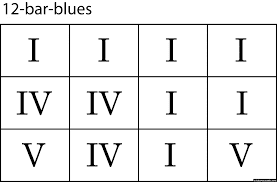Origin
Blues originating around the 1890’s was seen as an African American genre of music. Blues gained its popularity in the black community specifically in the Midwest and south in rural areas. Songs of blues were expressed with heavy emotions and often told in a story telling style. They would also often depict elements of the singer’s personal life and experiences. The style of blues was the combination of African and European elements, such as harmony and instrumentation. Common instruments used were jugs, washboards and kazoos. Blues had incorporations of works songs and spirituals. Blues was characterized by its lyrics, bass lines and instrumentations. Many elements, such as call and response that are traced by to the music of Africa.
Characteristics
Blues comes with many elements and characteristics of that come from other musical forms and had a positive and popular impact on American music. There are four main characteristics in blues: blue texts, the role of instruments, blue notes and blue forms. Blues texts or lyrics express feelings and emotions that are often sung in a story telling manner. Usually they can be personal experiences of the singer and contain irony or humor. They also address social and political problems in the community. Instruments played an essential role to the style of blues. They played a harmonic or rhythmic role to the singer and as a second voice. Instruments played in blues had sort of conversation with the singer. A style of blues jump blues is an up-tempo style of boogie-woogie bass lines, shuffle rhythms with brass or reed sounds. Boogie-woogie is a blues piano style that features repeated bass figures against a syncopated melody. The blue note is described as neutral pitches and are defined as a note that falls between two adjacent notes in the octave. They are an extension of the sounds in Africa. The blues scale used along or instead of blue notes was an incorporation of the flat third, fifth and seventh degrees on a scale. Blue forms use the twelve bar AAB form. Twelve bar blues are a stanza of three lines, line A is the repeated line and B is the line that rhymes the first two lines.

Social Implications, Commodification & Influence on Future Genres
Blues became popular and entered the world of entertainment and mass media. It was a style of music that was performed and artist were given payment for the work. As blue became more popular every Black community started to have the pop up of a theater so performances could take place. There were performances of minstrel and medicine shows along with circus performances. These performances opened a variety of options and opportunities for Black singers, musicians, dancer and comedians to show their talent, skill and get paid for it. Many singers and performers, such as Bessie Smith and Mammie Smith were given their time to shine and show their talent on the big stage. Moving forward in time, Mammie Smith was the first black vocalist to record blues commercially. In 1930’s recording of blues began to have a solo guitar or piano incorporated into the music. This style was mainly performed by males in southern juke joints, barrelhouses and urban rent parties. Some artists were Tommy Johnson, Charley Patton and Jim Jackson. There were also performances in large groups with string, wind, and percussion instruments. Many bands played with homemade instruments, such as the jug, washboard, or bucket. Some groups were the Whistler’s Jug Band and Hokum Boys. Blues started to get commercially recorded, but only by white people. White artist began to like blues and used it in their own way to express emotions and views towards particular topics. Blues took a turn for the worst after the Great Depression but took a turn in a great direction after the recording industry began to recover in the 1930s. Blues began the influence into rock & roll and soul music.
Important Performers
Conclusory Opinion
Blues played an important role in the development of genres such as Rock and Roll and Pop. In this genre, it provided the black community with songs that spoke on touchy subjects with a twist of humor. During this time period, you can see musicians such as Bessie Smith used their voices to talk about sexual liberation for women and domestic violence in their songs.

